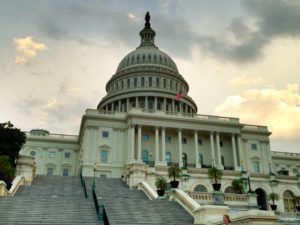So how much is the national debt in 2019? It is in excess of an overwhelming $23 trillion ($23,000,000,000,000) and counting. Yes, that is a lot of zeros to get to twenty three trillion dollars. To put this number in perspective however, let’s see how we got here over time.
Ancient History
Treasury’s records only go back to 1790 however America incurred its first national debt during the Revolutionary War in the 1780’s. When official reports were created, it showed $43 million in debt. Loan certificates to European countries funded the debt.
The Revenue Act of 1790 is when Alexander Hamilton issued federal bonds to collect the State’s debt (formerly Colonies) into one guaranteed federal obligation. The amount at the time was around $25 million. These two acts bring the total to around $68 million.
Over the next 23 years up until 1813, the debt rose and fell, but landed at a total decrease from 1790 of around $15 million or 22% to around $56 million. In 1814, the debt rose to over $81 million or 31% in a single year. This was due to the second war against Britain that transpired to the year 1816. During this time the national debt nearly tripled from before the war began to over $127 million or 282% from 1812.
Over the next 20+ years, America worked hard on paying down debt to less than $4.7 million. The United States shortly afterwards withdrew the federal government’s 20% stake in the then-chartered Second Bank of the U.S. that led to an eventual liquidation and currency crisis that lasted for seven years. At the end of 1837, America had only thirty seven thousand, dollars ($37,000) in debt. In 1837, the total of thirty seven thousand dollars would equate to a little less than $1,000,000 in today’s dollars.
And then there was War…..
There was a war with Mexico to annex Texas and California. Over $63 million in additional debt was incurred. (More than $2 billion in today’s dollars). President Abraham Lincoln pushed debt to almost 30% of GDP (Gross Domestic Product) and implemented America’s first income tax to help pay for it. After the Civil War, America’s debt was more than $2 billion however a rapidly growing economy quickly reduced the debt as a percentage of GDP but the dollar amount stayed between $2 – $3 billion for nearly 15 years.
World War I increased our national debt by 900%
As Europe began to implode in 1914, our borrowing increased getting ready for our impending involvement. Our debt went from $3 billion in 1914 to over $27 billion in 1919 or 900%. America went to work again paying off their debt for the next 13 years reducing the balance to around $19 billion.
Roosevelt’s New Deal with the Great Depression
Fighting the great depression, Roosevelt implemented the New Deal in an effort to spark the economy and create jobs. This deal pushed borrowing to over $40 billion and nearly doubled the national debt from the time he took office.
World War II
Although World War II’s increase was not as much from a percentage increase as World War I, WWII increased the national debt by 640%. The debt dollar amount rose $216 billion or to $269 billion dollars in a six year period ending in 1946. Most of the debt at this time was held by individual American’s in the form of Treasury bonds and the GDP ratio was 119%, the highest in U.S. history.
Medicare & Vietnam
In 1966, Lyndon Johnson signed Medicare into law creating one of the most expensive endeavors in U.S history. At roughly the same time the Vietnam War was an issue which caused debt to grow to $620 million by 1976. This caused an increase that more than doubled the debt as a whole from after World War II. The GDP ratio however was only 33%.
Reagan Administration and Taxes in Economic Policy
The debt grew substantially during this administration due to an anti-tax approach and a military buildup simultaneously. By the time the Berlin Wall fell, debt rose to $2.85 trillion in 1989. This was the first time during peacetime that the debt to GDP rate rose since the Great Depression. It is also important to note that the national debt was only 50% of GDP in 1989.
Rate of growth slowed from the 80’s to early 2000’s.
The rate in which the debt continued to increase did slowdown somewhat from the 80’s to the early 2000’s however it none the less continued to grow. The growth slowed from $200 billion to $400 billion per year to $100 billion per year in 2001. This was good in that it was slowing, however it continued to increase by massive dollar values in total. The GDP ratio was 55% in 2001.
9/11/2001 & The War On Terror
The war that speared as a result of the 9/11 attacks was funded 100% by the national debt. Taxes were not increased to fund this war and the amount grew from $400 billion to $500 billion per year. This rate of growth subsequently increased to $1 trillion per year by the 2008 Great Recession. President Bush and then later President Obama continued spending in order to draw the economy out of the recession. In 2008, the GDP ratio was 68%. By 2016 when Trump took office, the GDP ratio was 104%.
Trump Administration
In 2016, President Donald Trump inherited $19.5 trillion dollars in debt. Since this date the national debt has increased to $23 trillion dollars or by 18%. The debt to GDP ratio is currently at 106%. The only time this ratio has ever been higher was in 1945 and 1946 when it was 114% and 119% respectively. GDP rose for the first time however in 13 years over 3% from the fourth quarter of 2017 to the fourth quarter of 2018 to 3.1%. The United States leads the world with the most GDP, but growing GDP has been an issue for over a decade.
We keep asking the question, how much is the national debt in 2019? You must understand how we got to where we are to put this number in proper perspective. Since Trump became President, the nation has seen an additional 5.3 million jobs. The unemployment rate has plummeted. Additional jobs equal more taxes being paid in and collected with increased spending which keeps the economy running.
How does decreasing taxes increase revenue?
Decreasing the percentage of income taxes being charged as a whole to each individual or entity will ultimately increase tax revenue. The idea is that when the nation receives tax cuts, it increases economic prosperity as a whole, thereby creating additional jobs. When this occurs, more people from a quantitative perspective are paying taxes in as they are working and earning wages which allows for taxes to stay low in which the economy can thrive.
Higher Taxes Stymie Growth
If you tax the institutions to death that create jobs, you have lost everything. They will lay off workers as they can not afford to employ the numbers in a low tax climate. Then you have the snowball effect where everything goes south.
Now is the time to start paying down debt
Now is the time to recognize what is going on in this thriving economy and understand however that it could easily slip away if we are not diligent in reducing the debt while we can. In order to keep the positive momentum and continue to grow meaningfully we should focus on government waste for the first areas to reduce the budget in order to reduce debt and allow the increased tax revenue that is received from the creation of the additional jobs work to reduce the national debt.
So how much is the national debt in 2019? Too much in terms of the GDP ratio. At 106% in 2019, most creditors like to see this number no more than 77%. A World Bank study found that if the debt to GDP ratio exceeded 77% for an extended period of time, it slowed economic growth. Balancing the amount of debt is a very sensitive task in that you need the right ratio in order to continue to fund essential services while being responsible and not allow the debt to spiral out of control. It is important to know who your creditors are as well. Who really owns the national debt of 2019? You might be surprised. Do you think the national debt is too much? Leave us a comment.















[…] learn more about how we arrived at $23 trillion dollars, read How much is the National Debt in 2019 article that will guide you through history of how we arrived where we […]